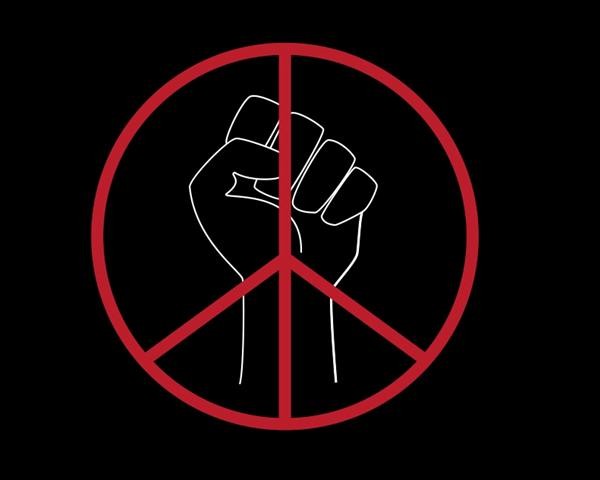 On April 19, Freddie Gray died after suffering a severed spinal cord while in police custody. In light of this unjust death, the citizens of Baltimore took to the streets, and challenged the constant police brutality towards the Black Community. Such protests echoed similar demonstrations in Ferguson, after the death of Michael Brown at the hands of Officer Darren Wilson, as well as Staten Island after the strangling and ultimate death of Eric Garner by Officer Daniel Pantaleo. Indeed, the brutality evidenced in Freddie Gray’s case is not an anomaly, but rather a part of an ever-growing state sponsored violence against Black people. In April alone, there have been a total of twenty-eight deaths of Blacks at the hands of law enforcement officers.[ref] “Killed By Police – 2015,” Killed By Police, 2015, accessed May 7, 2015, http://killedbypolice.net [/ref] Because many of these police officers have not been held accountable enough for their actions, the sons and daughters within the Black community continue to live in fear for their lives, while protesting the blatant racism haunting their social group. Yet interestingly enough, the media’s narrative of events is filled with condemnation for anything other than non-violent protest. Examining other non-violent demonstrations in history, specifically the Indian Independence movement and the 1960s Civil Rights Movement, the people employed a variety of tactics to obtain progress. In this respect, the vendetta is that the current struggle for justice, in the face of State enforced violence, will not be any different – non-violent activism should be seen as only one tactic of many, and not as the only acceptable method of struggle.
On April 19, Freddie Gray died after suffering a severed spinal cord while in police custody. In light of this unjust death, the citizens of Baltimore took to the streets, and challenged the constant police brutality towards the Black Community. Such protests echoed similar demonstrations in Ferguson, after the death of Michael Brown at the hands of Officer Darren Wilson, as well as Staten Island after the strangling and ultimate death of Eric Garner by Officer Daniel Pantaleo. Indeed, the brutality evidenced in Freddie Gray’s case is not an anomaly, but rather a part of an ever-growing state sponsored violence against Black people. In April alone, there have been a total of twenty-eight deaths of Blacks at the hands of law enforcement officers.[ref] “Killed By Police – 2015,” Killed By Police, 2015, accessed May 7, 2015, http://killedbypolice.net [/ref] Because many of these police officers have not been held accountable enough for their actions, the sons and daughters within the Black community continue to live in fear for their lives, while protesting the blatant racism haunting their social group. Yet interestingly enough, the media’s narrative of events is filled with condemnation for anything other than non-violent protest. Examining other non-violent demonstrations in history, specifically the Indian Independence movement and the 1960s Civil Rights Movement, the people employed a variety of tactics to obtain progress. In this respect, the vendetta is that the current struggle for justice, in the face of State enforced violence, will not be any different – non-violent activism should be seen as only one tactic of many, and not as the only acceptable method of struggle.
Just to clarify – a strict adherence to violent protest is not the only option. Mahatma Gandhi and Martin Luther King Jr. are often lauded for their pacifism, or the ideology that violence is inexcusable under any circumstance. Gandhi successfully engaged in civil disobedience in order to free India from the oppressive British Empire. Inspired by Gandhi, King then led the Civil Rights Movement, and encouraged acts of civil disobedience, along with marches, etc., in hopes of gaining attention from lawmakers to pass greater rights and protections for the Black community. History has highlighted both of these men’s pacifism as the primary method for their success. But Gandhi and King’s successes were not solely gained solely through non-violent methods. In fact, suggesting each movement’s political success, without mentioning protestor’s demonstrations of force within a historical and social context, is simply quite naïve.
Anarchist Peter Gelderloos argues in his book, How Nonviolence Protects the State, that proponents of non-violence have actually “whitewashed” the social movement history, by failing to examine the symbiotic relationship between non-violence and militancy. India’s independence, for instance, leaves out the British Empire’s decision to relinquish its control over the country, after the British suffered tragic losses during World War II. Moreover, with increasing Arab and Jewish militants in Palestine, the British grew wary that India may perhaps also move towards more violent actions. Likewise, during the civil rights movement, the Black Community denounced any further obedience towards the state, as evidence with the rise of militant revolutionary groups like the Black Panthers. The state soon realized it had no choice but to negotiate with the pacifists.
The public understands the current struggle in Baltimore, Ferguson, and New York, with a pacifist framework. However, these demonstrations do not exist in a vacuum – a vacuum consisting of an isolated incident a police officer killed a person of color; a vacuum where a police officer has been left “off the hook” without trial; a vacuum where a disenfranchised neighborhood has been tormented by the State, and plagued with systemic poverty and racism. It becomes clearer and clearer that non-violent activism is not benefiting the community. [ref] “Baltimore’s Violent Protesters Are Right: Smashing Police Cars Is a Legitimate Political Strategy,” Saloncom RSS, accessed May 7, 2015,http://www.salon.com/2015/04/28/baltimores_violent_protesters_are_right_smashing_police_cars_is_a_legitimate_political_strategy/ [/ref] Mindless destruction of a city is not an option. But following a strict pacifist philosophy has not been completely effective either. Instead, the Black Community should encourage a variety of tactics to combat an oppressive system, and lead a way for a better standard of living.
Take Action:
Visit the NAACP to support, and even join, the organization. The link will help find a local unit near you to volunteer, to donate money, and ultimately to help support their cause of educational, social, political, and economic, equality.




